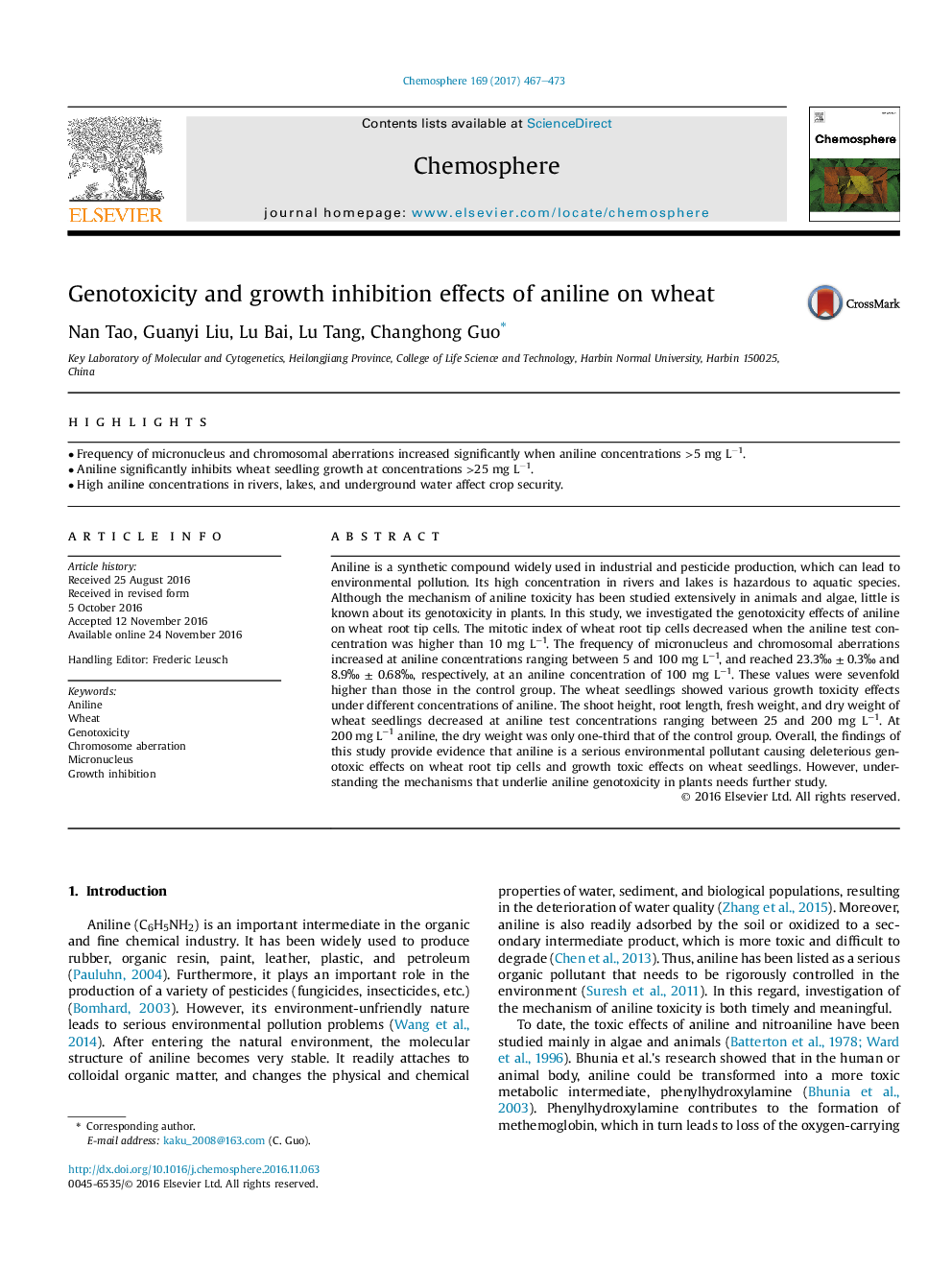| Article ID | Journal | Published Year | Pages | File Type |
|---|---|---|---|---|
| 5747023 | Chemosphere | 2017 | 7 Pages |
â¢Frequency of micronucleus and chromosomal aberrations increased significantly when aniline concentrations >5 mg Lâ1.â¢Aniline significantly inhibits wheat seedling growth at concentrations >25 mg Lâ1.â¢High aniline concentrations in rivers, lakes, and underground water affect crop security.
Aniline is a synthetic compound widely used in industrial and pesticide production, which can lead to environmental pollution. Its high concentration in rivers and lakes is hazardous to aquatic species. Although the mechanism of aniline toxicity has been studied extensively in animals and algae, little is known about its genotoxicity in plants. In this study, we investigated the genotoxicity effects of aniline on wheat root tip cells. The mitotic index of wheat root tip cells decreased when the aniline test concentration was higher than 10 mg Lâ1. The frequency of micronucleus and chromosomal aberrations increased at aniline concentrations ranging between 5 and 100 mg Lâ1, and reached 23.3Ⱐ± 0.3â° and 8.9Ⱐ± 0.68â°, respectively, at an aniline concentration of 100 mg Lâ1. These values were sevenfold higher than those in the control group. The wheat seedlings showed various growth toxicity effects under different concentrations of aniline. The shoot height, root length, fresh weight, and dry weight of wheat seedlings decreased at aniline test concentrations ranging between 25 and 200 mg Lâ1. At 200 mg Lâ1 aniline, the dry weight was only one-third that of the control group. Overall, the findings of this study provide evidence that aniline is a serious environmental pollutant causing deleterious genotoxic effects on wheat root tip cells and growth toxic effects on wheat seedlings. However, understanding the mechanisms that underlie aniline genotoxicity in plants needs further study.
